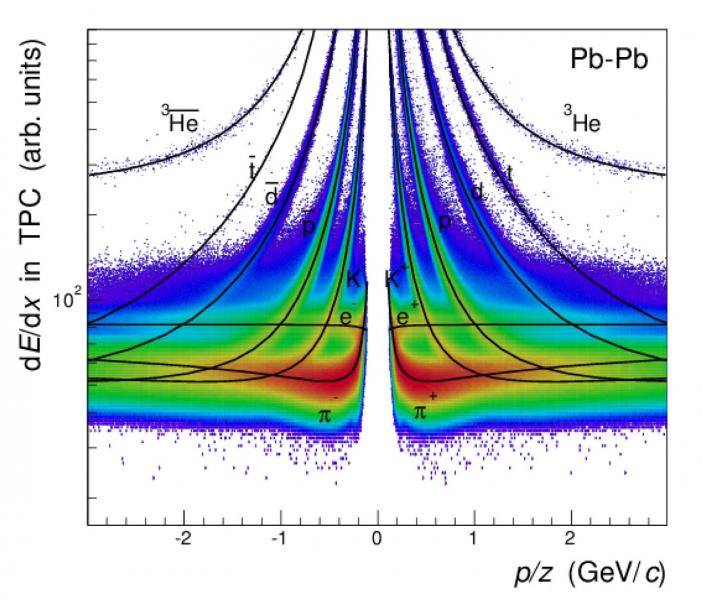ALICE and BASE experiments present new results related to CPT symmetry
In August the ALICE experiment published a precise measurement of the difference between ratios of the mass and electric charge of light nuclei and antinuclei produced during heavy-ion collisions at the LHC. The article published in the journal Nature Physics confirms one of the fundamental symmetries found in nature, CPT. It implies that the laws of physics are the same under the simultaneous reversal of charges (charge conjugation C), reflection of spatial coordinates (parity transformation P) and time inversion (T). The fundamental forces that we know should be the same when applied to an antiparticle, traversing in a mirrored space backward instead of forward in time. A few days ago, the Baryon Antibaryon Symmetry Experiment (BASE) have also published a paper in Nature, confirming the CPT symmetry between matter and antimatter by observing oscillations of protons and antiprotons in a magnetic field and finding no difference.
The ALICE collaboration has measured the difference between mass-to-charge ratios for deuterons (a proton, or hydrogen nucleus, with an additional neutron) and antideuterons, as well as for helium-3 nuclei (two protons plus a neutron) and antihelium-3 nuclei. The study by ALICE takes this research further as it probes the possibility of subtle differences between the way that protons and neutrons bind together in nuclei compared with how their antiparticle counterparts form antinuclei. The result, which comes 50 years after the discovery of the antideuteron at CERN and in the US, improves on existing measurements by a factor of 10-100. “The high precision of our time-of-flight detector, which determines the arrival time of particles and antiparticles with a resolution of 80 picoseconds, associated with the energy-loss measurement provided by our time-projection chamber, allows us to measure a clear signal for deuterons/antideuterons and helium-3/antihelium-3 over a wide range of momentum”, says ALICE spokesperson Paolo Giubellino.

Measurements of energy loss in the time-projection chamber enable the ALICE experiment to identify antinuclei (upper curves on the left) and nuclei (upper curves on the right) produced in the lead-ion collisions at the LHC
The Baryon Antibaryon Symmetry Experiment (BASE) experiment reported the most precise comparison of the charge-to-mass ratio of the proton to that of its antimatter equivalent, the antiproton. This can be measured by observing the oscillation of a particle in a magnetic field. To perform the experiment, the BASE collaboration used a Penning-trap system comparable to that developed by the TRAP collaboration in the late 1990s at CERN. However, the method used is faster than in previous experiments.

Schematics of the BASE experiment at CERN.
This has allowed BASE to carry out about 13 000 measurements over a 35-day campaign, in which they compare a single antiproton to a negatively-charged hydrogen ion (H-). Consisting of a hydrogen atom with a single proton in its nucleus, together with an additional electron, the H- acts as a proxy for the proton. The measured differences in the mass-to-charge ratios are compatible with zero within the estimated uncertainties, in agreement with expectations for CPT symmetry, and with a four-fold improvement in the energy resolution compared with previous measurements.
